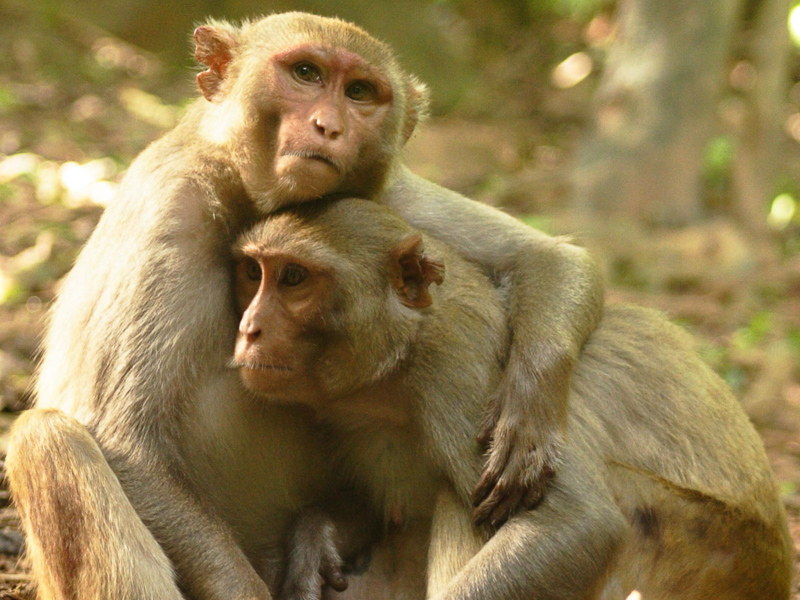What shapes your microbiome? It may not be what you think.
For immediate release ‐ September 29, 2023
Contact: Jon Pishney, 919.707.8083. Images available upon request
 Pair of rhesus macaques. Photo: Lauren Brent.
Pair of rhesus macaques. Photo: Lauren Brent.
(RALEIGH, N.C.) – The skin is the largest organ of the human body and the main barrier against the external world. Microbes on the surface of the skin often work in symphony with host skin cells to mediate body odor and, more importantly, overall health. For example, the immune system of the skin relies on microbes for tissue or wound repair.
But what exactly shapes the skin microbiota? Researchers at the North Carolina Museum of Natural Sciences and colleagues set out to answer this question by first studying the interactions between skin microbiota, social behavior, and year-to-year environmental effects in rhesus macaques – non-human primates that serve as important animal models for biomedical research.
What the researchers discovered came as a surprise.
“We expected animals that lived together and groomed each other would have more similar microbes on their skin,” writes Christina Roche, research scientist in Genomics & Microbiology at the N.C. Museum of Natural Sciences and co-lead author of a paper summarizing the results. “While we found this to be true, it was surprising that the external environment was a stronger influence on skin microbiota diversity and total composition.”
Researchers analyzed microbes from 78 rhesus macaques living on Cayo Santiago Island, Puerto Rico. Also known as Monkey Island, Cayo Santiago is a well-established “living laboratory” and home to more than 1,500 rhesus macaques on a densely populated 38 acres of land.
Rhesus macaques are highly social animals and are free ranging on the island, living in social groups exposed to the outside environment all year. “We compared skin microbiota from monkeys sampled from different social groups and in different years,” notes Julie Horvath, Head of the Museum’s Genomics & Microbiology Research Lab, jointly appointed at NC Central University, and senior author on the paper.
“There were annual differences in rainfall and wind patterns, and we found the variation in microbiota was also significantly different from year to year, having a stronger influence than social group membership. This suggests that the external environment plays a large role in which microbes live on the skin of these monkeys and offers promise for human medicine since external factors can be easier to manipulate.
“Research in these monkeys offers additional promise in terms of human health. These macaques have microbes on their skin that we generally think of as soil and fecal associated (microbes many people would want to wash off their skin), but some of these microbes are beneficial for wound healing and could be useful in human medicine.”
The paper appeared in Microbiology Spectrum September 26.
For more information about our upcoming activities, conservation news and groundbreaking research, follow @NaturalSciences on Instagram, Twitter and Facebook.

